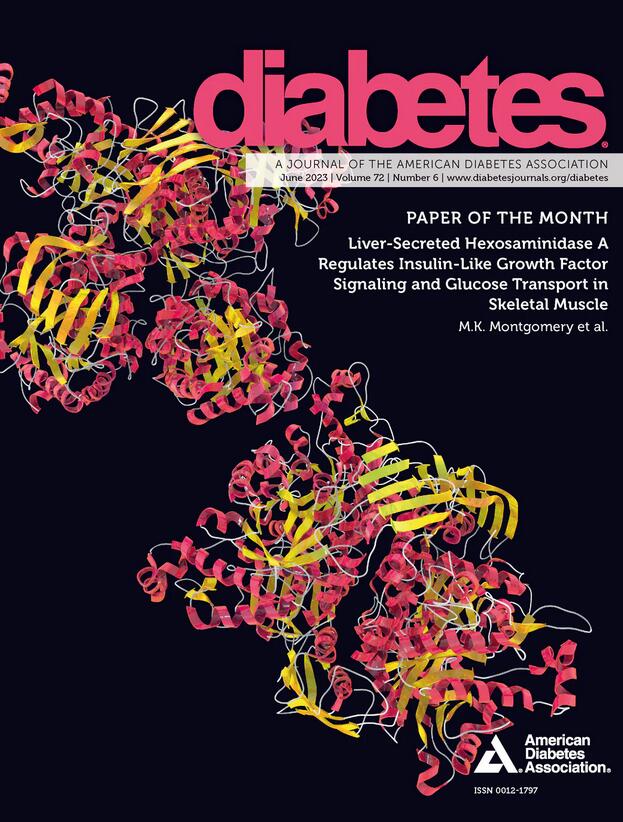992-P: A Retrospective Comparative Study of Glycemic Control Metrics at Six Months in 133 Patients with Type 1 Diabetes after Switching from isCGM to rtCGM with the Same Sensor Profile
IF 7.5
1区 医学
Q1 ENDOCRINOLOGY & METABOLISM
引用次数: 0
Abstract
Introduction and Objective: In Japan, FreeStyle Libre 2 (Libre 2) was approved as real-time continuous glucose monitoring (rtCGM) only when used smartphone application since its initial release, December 2023. Because early approval as rtCGM like Japan is uncommon, the efficacy of switching from intermittently scanned CGM (isCGM) to rtCGM with identical accuracy and specifications remains unclear. Methods: This retrospective study included adults with type 1 diabetes. Changes in HbA1c and CGM metrics were assessed before and 6 months after switching from isCGM to rtCGM. In patients switched from isCGM to isCGM with low and high glucose alert functions (Libre 2 reader users), due to difference of release day between the reader and app, only 3-month data were analyzed. Results: Of 133 patients enrolled from January 2024 through June 2024. 67 (50.4%) were male; the mean (±SD) age of the patients was 45.6 ± 15.3 years and HbA1c was 7.51 ± 0.64%. At 6 months post-switching, significant improvements were observed in mean HbA1c (7.51 vs. 7.35, p < 0.01), TAR (37.5% vs. 35.3%, p < 0.01), TIR (58.7% vs. 61.4%, p < 0.01), TITR (37.6% vs. 39.0%, p = 0.04), CV (38.0% vs. 36.3%, p < 0.01) and MAGE (127.3mg/dL vs. 118.9mg/dL, p < 0.01). No significant differences were observed for TBR (3.72% vs. 3.33%, p = 0.13) or Level 2 TBR (0.51% vs. 0.38%, p = 0.16). Similar effects on HbA1c and CGM metrics were observed in a 3-month analysis. On the other hand, 35 patients switched from isCGM to isCGM with alert functions showed no significant differences in HbA1c, TIR, TAR, and TBR at 3 months. Conclusion: Switching from isCGM to rtCGM improved glycemic control at 6 months in patients with type 1 diabetes. The lack of improvement in HbA1c and CGM metrics in patients using isCGM with alert functions suggests monitoring real-time glucose levels, rather than alert functions, may play a crucial role in achieving better glucose outcomes. Disclosure D. Sekiguchi: None. Y. Maeda: None. M. Morita: None. Y. Kurogi: None. M. Minami: None.992-P: 133例1型糖尿病患者从isCGM切换到具有相同传感器配置的rtCGM后6个月血糖控制指标的回顾性比较研究
简介和目的:在日本,FreeStyle Libre 2 (Libre 2)自2023年12月首次发布以来,仅在使用智能手机应用程序时被批准为实时连续血糖监测(rtCGM)。由于像日本这样早期被批准为rtCGM的情况并不多见,因此从间歇扫描CGM (isCGM)转换为具有相同精度和规格的rtCGM的效果尚不清楚。方法:本回顾性研究纳入成人1型糖尿病患者。在从isCGM转换为rtCGM之前和6个月后评估HbA1c和CGM指标的变化。在从isCGM切换到具有低血糖和高血糖警报功能的isCGM患者(Libre 2阅读器用户)中,由于阅读器和应用程序的发布日期不同,仅分析3个月的数据。结果:从2024年1月到2024年6月,133名患者入组。男性67例(50.4%);患者平均(±SD)年龄为45.6±15.3岁,HbA1c为7.51±0.64%。在转换后6个月,平均HbA1c显著改善(7.51 vs. 7.35, p <;0.01), TAR (37.5% vs. 35.3%, p <;0.01), TIR (58.7% vs. 61.4%, p <;0.01), TITR(37.6%比39.0%,p = 0.04),简历(38.0%比36.3%,p, lt;0.01)和MAGE (127.3 mg/dL比118.9 mg/dL, p <;0.01)。TBR (3.72% vs. 3.33%, p = 0.13)和2级TBR (0.51% vs. 0.38%, p = 0.16)无显著差异。在3个月的分析中观察到对HbA1c和CGM指标的类似影响。另一方面,35例患者从isCGM切换到具有警报功能的isCGM, 3个月时HbA1c、TIR、TAR和TBR无显著差异。结论:从isCGM转换为rtCGM可改善1型糖尿病患者6个月时的血糖控制。在使用具有警示功能的isCGM患者中,HbA1c和cgm指标缺乏改善,这表明监测实时血糖水平,而不是警示功能,可能在获得更好的血糖结果中发挥关键作用。D.关口:没有。前田:没有。森田:没有。黑木:没有。南先生:没有。
本文章由计算机程序翻译,如有差异,请以英文原文为准。
求助全文
约1分钟内获得全文
求助全文
来源期刊

Diabetes
医学-内分泌学与代谢
CiteScore
12.50
自引率
2.60%
发文量
1968
审稿时长
1 months
期刊介绍:
Diabetes is a scientific journal that publishes original research exploring the physiological and pathophysiological aspects of diabetes mellitus. We encourage submissions of manuscripts pertaining to laboratory, animal, or human research, covering a wide range of topics. Our primary focus is on investigative reports investigating various aspects such as the development and progression of diabetes, along with its associated complications. We also welcome studies delving into normal and pathological pancreatic islet function and intermediary metabolism, as well as exploring the mechanisms of drug and hormone action from a pharmacological perspective. Additionally, we encourage submissions that delve into the biochemical and molecular aspects of both normal and abnormal biological processes.
However, it is important to note that we do not publish studies relating to diabetes education or the application of accepted therapeutic and diagnostic approaches to patients with diabetes mellitus. Our aim is to provide a platform for research that contributes to advancing our understanding of the underlying mechanisms and processes of diabetes.
 求助内容:
求助内容: 应助结果提醒方式:
应助结果提醒方式:


